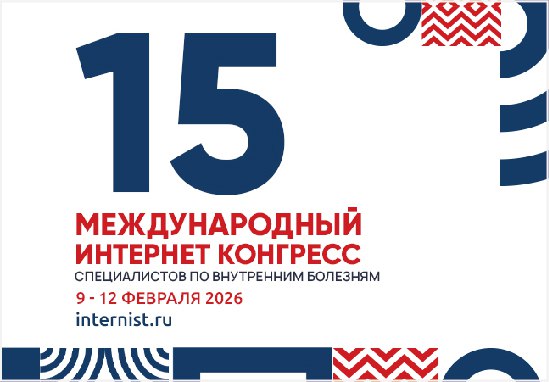Outpatient follow-up of patients with gastric and duodenal ulcer by a primary care physician. Guidelines
https://doi.org/10.15829//3034-4123-2025-40
EDN: GNZWQU
Abstract
The guidelines describe the management of outpatient follow-up of patients with gastric and duodenal ulcer by a primary care physician. The following are presented: the approximate scope and frequency of paraclinical examinations, information on the diagnosis, treatment and prevention of complications of the disease. The guidelines are intended for district internists, general practitioners (family doctors), district internists of the shop medical district, as well as for secondary medical personnel working with these doctors, for paramedics of paramedic-obstetric stations (paramedic health centers) in case they are assigned the functions of the attending physician.
The guidelines can be used by public health physicians, heads of primary health care facilities and their divisions.
About the Authors
O. M. DrapkinaRussian Federation
Moscow
V. T. Ivashkin
Russian Federation
Moscow
I. V. Maev
Russian Federation
Moscow
M. A. Livzan
Russian Federation
Moscow
D. I. Abdulganieva
Russian Federation
Moscow
I. G. Bakulin
Russian Federation
Moscow
N. V. Bakulina
Russian Federation
Moscow
O. V. Gaus
Russian Federation
Moscow
P. V. Ipatov
Russian Federation
Moscow
E. M. Mamutova
Russian Federation
Moscow
E. D. Savchenko
Russian Federation
Moscow
A. Sh. Senenko
Russian Federation
Moscow
A. F. Sheptulina
Russian Federation
Moscow
R. N. Shepel
Russian Federation
Moscow
References
1. Chandie Shaw MP, van Romunde LK, Griffioen G, et al. Vergelijking van bifasisch radiologisch maag-en duodenumonderzoek met fiberendoscopie voor de diagnostiek van peptische zweren en maagcarcinomen [Comparison of biphasic radiologic stomach and duodenum studies with fiber endoscopy for the diagnosis of peptic ulcer and stomach carcinoma]. Ned Tijdschr Geneeskd. 1990;134(7):345-9.
2. Shay H, Sun DCH. Etiology and pathology of gastric and duodenal ulcer. In: Bockus H.L. Gastroenterology, Philadelphia-London: Saunders Elsevier. 1968:420-65.
3. Ivashkin VT, Sheptulin AA. Diseases of the esophagus, stomach and intestines. Moscow: MEDpress-inform; 2009. (In Russ.)
4. Outpatient gastroenterology. A guide for doctors edited by I.G. Bakulin. 2nd ed., supplement. and revised by M.: Medcongress, 2023. 276 p. (In Russ.)
5. Drapkina OM, Kashin SV, Kuvaev RO, et al. A modern algorithm for the diagnosis and management of patients with chronic atrophic gastritis and intestinal metaplasia of the stomach. Preventive medicine. 2023;26(1):7-10. (In Russ.)
6. Barkun AN, Bardou M, Kuipers EJ, et al. International consensus recommendations on the management of patients with nonvariceal upper gastrointestinal bleeding. Ann Intern Med. 2010;152(2):101-13. doi:10.7326/0003-4819-152-2-201001190-00009.
7. Tomtitchong P, Siribumrungwomg B, Vilaichone RK. Systematic review and meta-analysis: Helicobacter pylori eradication therapy after simple closure of perforated duodenal ulcer. Helicobacter. 2012;17(2):148-52. doi:10.1111/j.1523-5378.2011.00928.x.
8. Sharma VK, Sahai AV, Corder FA, Howden CW. Helicobacter pylori eradication is superior toulcer healing with or without maintenance therapy to prevent further ulcer haemorrhage. Aliment Pharmacol Ther. 2001;15(12):1939-47. doi:10.1046/j.1365-2036.2001.01134.x.
9. Mayev IV, Samsonov AA. Duodenal ulcer: various approaches to modern conservative therapy. Consilium medicum. 2004;(1):6-11. (In Russ.)
10. Vomero MD, Colpo E. Nutritional care in peptic ulcer. Arq Bras Cir Dig. 2014;27(4):298-302. doi:10.1590/S0102-67202014000400017.
11. Malfertheiner P, Megraud F, O’Morain CA, et al. Management of Helicobacter pylori infection — the Maastricht V/Florence Consensus Report. Gut. 2017;66(1):6-30. doi:10.1136/gutjnl-2016-312288.
12. Wong CS, Chia CF, Lee HC, et al. Eradication of Helicobacter pylori for prevention of ulcerrecurrence after simple closure of perforated peptic ulcer: a meta-analysis of randomized controlled trials. J Surg Res. 2013;182(2):219-26. doi:10.1016/j.jss.2012.10.046.
13. Ivashkin VT, Lapina TL, Maev IV, et al. Clinical recommendations of the Russian Gastroenterological Association, the Scientific Community for the Promotion of Clinical Study of the Human Microbiome, the Russian Society for the Prevention of Noncommunicable Diseases, the Interregional Association for Clinical Microbiology and Antimicrobial Chemotherapy for the diagnosis and treatment of H. pylori in adults. Russian Journal of Gastroenterology, Hepatology, and Coloproctology. 2022;32(6):72-93. (In Russ.)
14. Scally B, Emberson JR, Spata E, et al. Effects of gastroprotectant drugs for the prevention and treatment of peptic ulcer disease and its complications: a metaanalysis of randomized trials. Lancet Gastroenterol Hepatol. 2018;3(4):231-41. doi:10.1016/S2468-1253(18)30037-2.
15. Poinard T, Lemaire M, Agostini H. Meta-analysis of randomized clinical trials comparing lansoprazole with ranitidine or famotidine in the treatment of acute duodenal ulcer. Eur J Gastroenterol. Hepatol. 1995;7:661-5.
16. Hu ZH, Shi AM, Hu DM, Bao JJ. Efficacy of proton pump inhibitors for patients with duodenal ulcers: A pairwise and network meta-analysis of randomized controlled trial. Saudi J Gastroenterol. 2017;23(1):11-9. doi:10.4103/1319-3767.199117.
17. Toews I, George AT, Peter JV, et al. Interventions for preventing upper gastrointestinal bleeding in people admitted to intebsive care units. Cochrane Datadase Syst Rev. 2018;6:CD008687. doi:10.1002/14651858.CD008687.pub2.
18. Evseev MA, Klishin IM. Effectiveness of antisecretory therapy with proton pump inhibitors in gastroduodenal ulcerative bleeding. Russian Journal of Gastroenterology, Hepatology and Coloproctology. 2010;20(3):55-62. (In Russ.)
19. Thorsen K, Glomsaker TB, von Meer A, et al. Trends in diagnosis and surgical management of patients with perforated peptic ulcer. J Gastrointest Surg. 2011;15(8):1329-35. doi:10.1007/s11605-011-1482-1.
20. Satoh K, Yoshino J, Akamatsu T, et al. Evidence-based clinical practice guidelines for peptic ulcer disease 2015. J Gastroenterol. 2016;51(3):177-94. doi:10.1007/s00535-016-1166-4.
21. Søreide K, Thorsen K, Harrison EM. Perforated peptic ulcer. Lancet. 2015; 386(10000):1288-98. doi:10.1016/S0140-6736(15)00276-7.
22. Burkov SG. Diseases of the digestive system in pregnant women. Moscow: KRON-PRESS, 1996. 217 p. (In Russ.)
23. Gerson LB. Treatment of gastroesophageal reflux disease during pregnancy. Gastroenterol Hepatol (N Y). 2012;8(11):763-4.
Supplementary files
Review
For citations:
Drapkina OM, Ivashkin VT, Maev IV, Livzan MA, Abdulganieva DI, Bakulin IG, Bakulina NV, Gaus OV, Ipatov PV, Mamutova EM, Savchenko ED, Senenko AS, Sheptulina AF, Shepel RN. Outpatient follow-up of patients with gastric and duodenal ulcer by a primary care physician. Guidelines. Primary Health Care (Russian Federation). 2025;2(2):79-97. (In Russ.) https://doi.org/10.15829//3034-4123-2025-40. EDN: GNZWQU






















